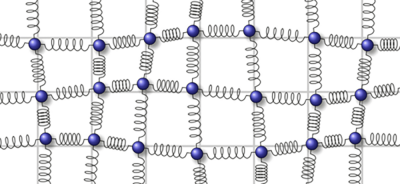Eigenstate entanglement in quantum matter follows crossover scaling functions

In contrast to classical systems, the state-space for a quantum many-body system grows exponentially in the number of its components. The goal of quantum computation is to exploit this enormous complexity to solve problems that are intractable for our usual classical computers. A decisive resource for quantum information processing is entanglement. Beyond that, measures of entanglement are used to understand and quantify the complexity of quantum matter.
Entanglement in ground states -- the lowest energy states that the system approaches at very low temperatures -- had been studied previously. For quantum many-body ground states, one generally finds that the entanglement between a subsystem and the rest is proportional to the surface area of the subsystem; this is called the area law. Much less was known about excited states, just that excited states are generally much more entangled and that their entanglement entropies should be proportional to the subsystem volume.
In recent contributions [1-3], Qiang Miao and Thomas Barthel found that, rather generically, entanglement entropies of energy eigenstates are captured by a single crossover function. These functions capture the full crossover from the groundstate entanglement regime at low energies and small subsystem size (area or log-area law) to the extensive volume-law regime at high energies or large subsystem size. Furthermore, in quantum-critical regimes, i.e., a temperature and parameter regime that is dominated by a zero-temperature phase transition point, the crossover functions assume universal scaling forms. These universal scaling functions are shared by large classes of systems, irrespective of their microscopic differences.
These somewhat surprising results are based on the applicability of the eigenstate thermalization hypothesis. This hypothesis asserts that energy eigenstates are basically indistinguishable from thermal states when our observations are restricted to small subsystems of a quantum many-body system. Hence, the entanglement entropies in eigenstates can be deduced from subsystem entropies of corresponding thermal equilibrium states. Details can be found in [1-3], where the applicability of the eigenstate thermalization hypothesis for subsystem entropies is confirmed and crossover scaling functions have been determined for several model systems.
[1] Q. Miao and T. Barthel, "Eigenstate entanglement: Crossover from the ground state to volume laws", Phys. Rev. Lett. 127, 040603 (2021).
[2] T. Barthel and Q. Miao, "Scaling functions for eigenstate entanglement crossovers in harmonic lattices", Phys. Rev. A 104, 022414 (2021).
[3] Q. Miao and T. Barthel, "Eigenstate entanglement scaling for critical interacting spin chains", Quantum 6, 642 (2022).
